The first town hall was well attended and throughout we had around 400 Founder Members present.
The first part of the session was used to explain that WildEarth at various stages has been funded by either investors putting money in, or through licensing the rights to broadcast certain programs to TV networks. Since late 2014 this licensing revenue was provided through ‘safariLIVE’ and mainly from National Geographic Wild. In 2018 and 2019, the SABC (South Africa) and CGTN (China) provided some additional license fees.
From comments made, it seems that there is quite some confusion between licensing and sponsorship, with many thinking National Geographic ‘sponsored’ us. However, licensing a program is very different from sponsoring a company or program. When paying for a license a network purchases certain rights with regard to a program, e.g. to broadcast it on television in the USA, and this is what NatGeo Wild did. Sponsorship is when a company provides money (or goods) in return for having its name associated with a certain program. Advertising is again different as it is money (or goods) received in direct return for promoting one or more of products.
Those of you who’ve been with us from the start of safariLIVE [2014] will have seen that at various times we have tried to make night broadcasts work by using infra-red cameras and thermal imaging. The reason we spent so much effort on this is that networks who license our programs will not pay significant sums for programs they cannot broadcast in prime-time (19 – 22 PM). And during this prime-time in both the major TV markets – the UK and the US East Coast – it is almost always night in Africa. The reality is that TV audiences do not want to see black-and-white, they expect to see the beauty of Africa in daylight and full colour. And, given the timezones, it is simply not possible for us to deliver this LIVE to those two markets.
Therefore, networks like NatGeo Wild needed to program us outside of prime-time in order to get daylight broadcasts. This reduced their income from the shows, and thus what they could afford to pay to us. Despite the best efforts from both sides, the economics simply did not and won’t work. (A further challenge is that night time is hunting time, and this is also not what the majority of the audience wants to see.)
While we can broadcast LIVE safaris in daylight to countries in Africa (part of the year) and East Asia, there is much less money available for licensing in those countries and without license revenue, the US and UK, safariLIVE in its current form is simply not viable.
However, on the plus side, there is a massive and growing interest in LIVE wildlife content around the globe, including the UK and US, and if WildEarth can find a way to deliver daylight wildlife content, we are likely to be able to license this in these countries. Over the past 5 years, WildEarth has built a strong reputation and is seen as a reliable company that can produce high-quality LIVE wildlife content at a very reasonable price, and various networks and platforms have expressed strong interest. But, … only if we can provide daylight content to them in their prime-time. Therefore, in other to thrive WildEarth will need to grow beyond daily safaris from Africa, so we can deliver on those expectations. It is very important to note that this will not mean that we will stop our daily safaris:
We will continue to broadcast daily safaris, and will do so from Djuma!
Graham will speak more about changes we are making in the coming weeks on Thursday at 19:00 CAT (immediately following the Sunset safari; noon EST, 9 AM PST, 17:00 GMT). Amongst other things, he will explain how we will transition from referring to the safaris as safariLIVE to WildEarth, including a change in the hashtag, and that, aside from Jamie, you will still be seeing your favourite guides on your screens.
So tune in on Thursday to hear more about all this!

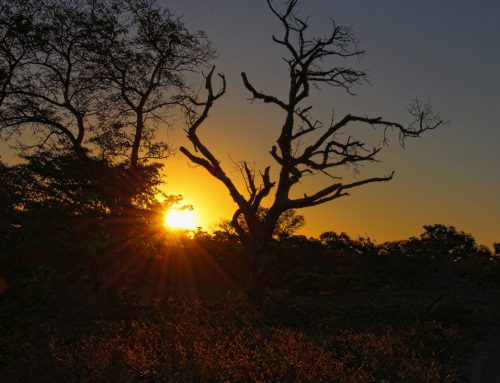
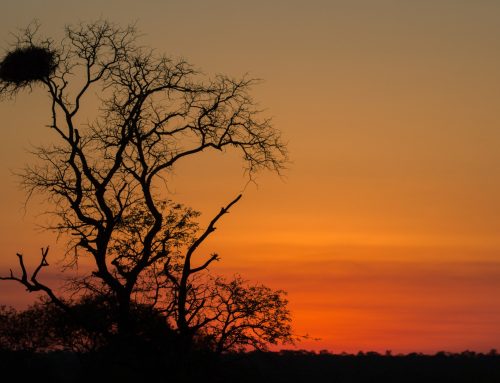
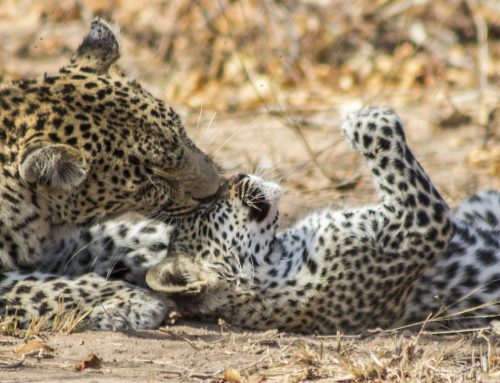
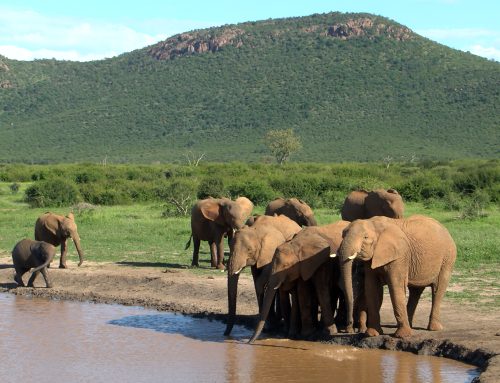
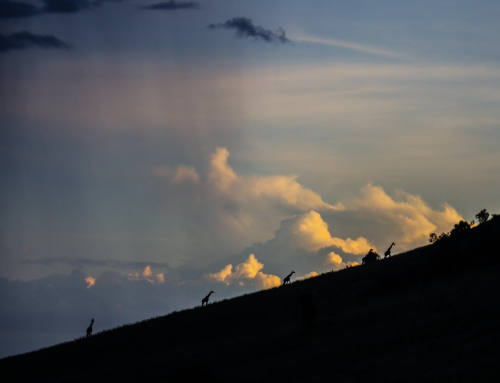
I’m very glad to participate in town hall meetings and was a bit shocked when I heard James was leaving …dont let him go guys he is way needed to much…pay him whatever u must but please dont let James go..I’ve been watching SL/WE for almost 5yrs…why? Because I love James …he is informative smart and of course very funny…please dont loose James…and Trishala I love Trishs enthusiasm for the simplest things…I love her singing and her humor…although not as funny as James but, a real asset for the team…I could go on writing about everyone from Lauren whom I love to Steve Oh my word!! This is the best team and I love watching them all. I will continue to watch and be a part of WE as I hope to one day be a zoomie lol keep at it Graham this is a program you do NOT want to lose 🌝
Thanks for the update. Please keep the many many South African expats spread all over the world in mind. My family and I leave for the UK on the 10th Dec and Wild Earth will be my ‘life line’ in dealing with leaving my home country.
Perhaps you could get some more exposure by working with expat social media groups or maybe even embassies and consulate groups?
Like many others, I’m more than happy to watch a recorded show if I miss it live and I’m very happy to watch via web stream. Haven’t watched anything via actual TV in AGES. What about Netflix and Showmax type platforms? Is there no possible revenue there?
I have been a huge fan of SafariLive for many years. I know that the live and interactive part has been an important selling point for watching the show and perhaps it is to those lucky enough to be able to watch live. I am at work or sleeping during live drives, but it hasn’t taken away my complete addiction and enjoyment of the show. I use Twitter to get updates and try to streamline the show to watch interactions between animals and fast forward to the guides I really love. If the hours or “peak tv viewing” times are a huge part of the problem, I can guarantee that you have an enormous fan base who adore the show whether it is live or not.
If it would make the show easier to sell in a tv platform sort of way to create drives that are not live, or done live and edited into a compact show that could play at peak tv time, If it means the survival of this wonderful show, then why not? Few people have 6 hrs a day to commit to the show, but somehow you have hooked a solid fan base nonetheless.
I would pay for the YouTube stream, but if that won’t be enough, I hope minimizing the hours and increasing the valuable content may help in reducing costs and attracting more people if it is available at the right time.
Lastly, I hope you keep your solid guides – every new hire takes a while to learn the ropes and get viewers warmed up to them, honestly, James is a huge reason I watch – Tristan was fabulous as well … I can’t explain why. Trishala is adorable and whip smart and Lauren has turned into a real pro, I hope they stay.
Thank you for making the summary available – I’m rooting for WildEarth to succeed
Thank you for the wonderful service. I have been watching for a few years through recordings on You Tube because I am working when you broad cast live. It is totally acceptable to watch this with a delay and it has become a part of my life. I am very grateful for the free service for these past years and for your knowledgable and entertaining guides, camera and tech crew and you, the owners and organizers.
I have the following suggestion to make. I did miss the Town Halls and am not sure if this came up already. I donate to local public radio services here on a monthly basis and would be happy to do the same for Wild Earth. If you offer this option; you could be assured of a steady stream of funding from a donor base to add to additional funds you will hopefully secure. All the best in these months of transition and thanks again…
Thank you for posting. With continued work by WildEarth it should be possible to arrange for significant licensing revenue either from a TV broadcaster or from a streaming service in some part of the world.
In terms of creating a lucrative product for TV with a partner media platform I suggest a one hour live show five or more days a week with James Hendry as the host and lead presenter. Several trackers could head out before each show to locate animals and then James can visit the found animals with his entertaining SafariLive style presentation. The tracking aspect, which is less action packed for TV, would be a much smaller part of such a show. A second and possibly third guide could be a sidekick(s) for additional sightings and as a backup should James fall ill. Such a show could be geared for adults or children.
As we know James Hendry is a talented entertainer and Djuma is an excellent wildlife filming location.
During the time of year about 50 days both before and after the December 21st solstice it would seem that a time slot of 10:00pm – 11:00pm in the US Eastern Time Zone would be of sufficient value for broadcast, particularly given that it would be primetime in other US and Canadian time zones.
Somewhat similarly at this time of year for Central Europe, such as Germany and France, the 1800-1900 time slot right before prime time would have some value; this might require a host speaking the relevant language.
I am sorry to hear that the children’s Saturday morning time slot with NatGeo Kids did not prove profitable. Perhaps if the broadcast was both Saturday and Sunday mornings (US Eastern Time Zone) with a different media partner and with trackers heading out prior to the broadcast to locate animals it could be made viable.
The product created by WildEarth is quite good and possesses value as content. Please keep working on the business development. Thank you for all WildEarth’s hard work.
All fatanstic suggestions . I was thinking the very same things. Thank you making these practicle workable suggestions. I pray WE will consider.
I missed the first Town Hall meeting and am grateful I was able to read the highlights, thank you for posting them…….very insightful.
Was sorry to miss the first Town Hall meeting, and I appreciate being able to read a synopsis at Wild Earth. I have been watching SafariLive since 2015, but due to time issues, I rarely am able to watch “live” and depend on youtube to watch twice a day, every day the daytime and nighttime drives. I enjoy both immensely. I was on safari in Tanzania in 2012 and this is my safari fix. I have grown to value all of the staff, FC, guides, cam ops as family. The animals, especially in Djuma, are like this wonderful world you can get so involved with. I would miss not having the night drives, as they show the other side of the coin, and without them you are only seeing half of the story. I look forward to seeing how all of the planning sorts itself out. I am going to miss Jamie so very much, a truly beautiful human being. I have learned SO MUCH by watching SafariLive, both from the guides and the animals. I am luckily enough to be going on safari again in Tanzania next year, and I know that my viewing experience of the animals will be greatly enhanced by what I have learned from the guides while out on drives. Thank you.
Ty #WildEarth
Thank you for sharing this with us. It helps knowing the difference between sponsorship and licensing and the challenges that were faced regarding time zones. Looking forward to future updates and am grateful for your transparency. WildEarth is very loved and I look forward to watching many more drives!
So happy that we will continue to enjoy the love of nature you all share with us.
I, along with many others, am relieved the changes will be minimal. I would be happy to pay to watch safaris. To be honest (I know, we shouldn’t say that…) I was quite astounded to stumble across Safari Live and discover it was free! I have agoraphobia, due to working with sexually abused children for many years…and the comfort of our guide’s voices have gotten me through many horrific times. Americans are very generous people. We will do whatever it takes to make Wild Earth a success.
What abut other countries such as Australia and New Zealand? You’re Morning safaris are at 4pm here! I’m sure there would be a demand around here to see you! Also I stick by the thought that if you have an option to pay a small amount each month on Youtube, it will help! I pay a subscription to another Wildlife channel.
Thank you for sharing this update on my much loved show. l’ve watched since early 2015 and it quickly became a permanent part of my daily routine . I feel as if the guides, the cam-ops and even the animals are a part of my life and to loose them would be heart breaking. I am so relieved and I thank you form the bottom of my heart for your dedication to this and the hard work ahead. I know that you, with the help of the 400 Founders, will be successful . Again thank you from the bottom of my heart.
Thank you!
Thank you so much for the explanations given, helps to understand what is going on. Look forward to the live broadcast with Graham to hear the future plans.
Thank you
Great to see you all are working together with the viewers as one. I can’t wait to hear what graham has to share tomorrow.
Thank you for the summary. It is beneficial.
thank you very much
thank you – live drives/Safarilive are part of my life.
Was able to donate, but an amount less than $200 so Thank you for opening up to us as well. I appreciate the details and look forward to the update tomorrow.
Thank you for the first Town Hall update.
Note: the ‘Share This Story’ links at the end of the update will confuse members as you have requested us NOT to share/copy this information
I would disagree about the majority not wanting to see night time hunting.
I look forward to watching each and every day. I have learned so much from you all, and look forward to continued “lessons.” Thank you all for making my day, every day.
Thanks for the reassuring information. :)
WildEarth, SafariLive, it’s all good. Thank you so much for all your caring and for being so fully present and working on keeping the live game drives going. Plus you’re creating a priceless archive. Good on you.
Thank you for the explanation. We look forward to what the future has in store for WildEarth. Sending all good thoughts your way.
Thank you for including us!
While the Safari is better without commercials, I am sure everyone would be happy to watch commercials in order to keep Safari Live /Wild Earth going. It seems to make other YouTuber’s millionaires or lots of revenue. Cannot Wild Earth monitize the broadcasts?
WE would have to increase the viewership substantially on YouTube as a way to monitize the broadcasts. Not enough eyeballs to justify $$ from companies for commercials.
Thank you for this really helpful explanation of the reasons for such drastic changes,
You are now certainly VERY aware how much you mean to all of us regular viewers. It was absolutely amazing to see the total amount of money rising so incredibly quickly when we watched Graham’s very emotional first chat and such a delight to see the relief in his voice and body language when enough money was raised to continue for longer. As a UK watcher , I often catch up when I can’t watch live and have learnt SO much from all of your exceptional guides whose knowledge and passion is infectious.
I will miss Jamie and her gentle, knowledgeable beautiful presenting manner. She is simply stunning.
I am also so delighted that all the regular guides that have been the stalwarts of the shows since the whole team had such changes , are remaining with you .
Although I have a spinal disease and am in constant pain, I am one of many of your viewers that find I get real pain relief whilst I’m watching and following the incredible wildlife that we see at Djuma . A massive thank you to Graham and Emily for your ongoing superb vision. I know that you will find a way to continue in your life’s dream , that is now such a big part of so many peoples lives . Also a huge thank you to ALL at WE/SL from guides and Cam ops to FC and all the support staff in every department. WE thank you all ❤️❤️❤️. Love Sally … aka Balkadog007
Thank you for the update!!! Sounds great happy happy. Seeing our beloved animals is prime. 🙏🏻
Thank you so much for doing everything you can to stay running. Being a senior on low fixed income I could not donate but have been spreading the word
I love the night time drives and love seeing nature in its rawest form including hunting and kills. I hope if you do move to the daytime drives for income purposes we will still be able to see the night time drives on YouTube. My husband and I watch it every night when we get home from work. Looking foward to hearing Grahams talk on changes coming up.
thank you this explains a lot and i am excited to hear what your plains are. Tinna2
For some reason I was not able to donate. Is it possible to donate now and what form can be used?
Thank you so much